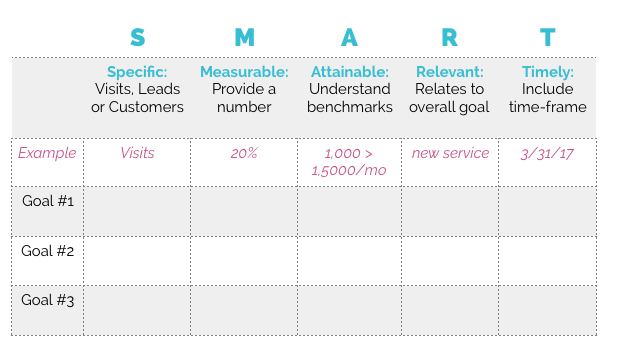Subscribe now and get the latest podcast releases delivered straight to your inbox.
It's that time of year again—the time when you start putting together your marketing plan for the next year. With 2016 drawing to a close and 2017 approaching fast, you'll want to take a hard look at this year's efforts.
You'll need to determine your successes and failures to develop a solid marketing plan for next year that will enable your business to experience greater levels of success. By reviewing your current efforts, you'll be able to better shape your choices to create a more effective marketing plan in the coming year.
Check the Numbers
A look at the year's numbers will quickly show you whether or not you've accomplished your marketing goals. Are you selling more now than you were at this time last year? Do you have more returning customers? Are you generating more leads? If so, continue to maintain those parts of your strategy in the coming year that are showing clear benefits and ROI. On the other hand, if you've experienced a dip in sales, you know that something about your current marketing efforts has been ineffective—and that means a change is in order. This analysis of the current year's profits and losses is a great indicator of where the bar was set too high, where your execution fell short of your expectations or where you should re-allocate or cut back spending in certain areas.
Detailed Analysis
As important as they are, numbers alone won't tell you exactly what marketing strategies are working. There are many other factors to consider and intangibles to evaluate. Together, your numbers along with these other factors form an effective picture of your current marketing efforts and a guideline for next year's strategy. Here are some of the questions that need to be asked:
- What is the current cost to reach one new customer or client?
- What's the return on investment for each of your marketing strategies? What strategy is most likely to bring in new customers?
- What about re-engaging former customers and bringing them back to your business?
- What were your key accomplishments for 2016?
- What failures or setbacks did you experience this year?
- What keywords ranked highest for your website?
- How has your marketing reach expanded throughout the past year?
“Set your goals for 2017 based on 2016's marketing successes and failures” TWEET THIS
Considering Your Customers
It's more effective to actively engage with customers to learn about what is and isn't working for them. This can take the form of:
- Online surveys—ask your current customers to rate your products and/or services via targeted emails.
- Social media ads—monitor how customers are reacting to social ads and other interactive content, including what they've been most likely to respond to, repost or share.
- Social media engagement—keep a close eye on what posts get the most engagement based on content, timing, etc. (We love RivalIQ for monitoring).
You want to know what your customers have engaged with, what drew them to your business and what's working for them. Do you have incentives that stand out from your competitors? A fantastic social media presence that encourages your personas to interact with you? Don't be afraid to ask customers what they like most about your business.
Evaluate successes and areas to improve
Start by understanding who your company is and what you're able to accomplish. Align your goals with:
- What sets you apart from your competitors—what makes your business remarkable?
- What are the new technologies or platforms making an impact—that are appropriate for your business—that you need be aware of and incorporate in your strategy? We emphasize this because, all too often, we see businesses jumping on the bandwagon before they've mastered their other efforts or truly evaluated if the new platform is right for their audience.
- What corner of the market belongs to your business? How do you want to expand that in the coming year?
- What channels have you used successfully in the past?
- How is your industry changing?
- Have you revisited your buyer personas to make sure they're still accurate? Do you need to add anyone new to adjust for your current climate or new products/services you're offering?
- What new channels or trends might you need to learn about in order to more effectively reach your target audience?
Set Clear Goals
We start planning every year with our clients with a SMART goal setting session. SMART goals help improve achievement and success. A SMART goal clarifies exactly what is expected and the measures used to determine if the goal is achieved and successfully completed. Loose, ambiguous goals that aren't tied to metrics are near impossible to measure ROI—avoid generalities like "increase social media traffic" or "grow more website visits". Get specific! Increase your social media traffic by how much? How many website visits do you want—and need—each month to hit your goals? And most importantly, make sure that your goals are clear to everyone on your team, so that you're all working together.

Developing an effective marketing plan with quantifiable goals is the best way to help push your business to greater success in 2017. Your marketing plan, complete with the return on those investments and the way your marketing impacts your customers, shapes your business in a variety of ways. By setting those goals now, you can start shaping that strategy for the coming year.


Order Your Copy of Marcus Sheridan's New Book — Endless Customers!
.jpg?width=50&height=50&name=Ali-Parm%20(1).jpg)
